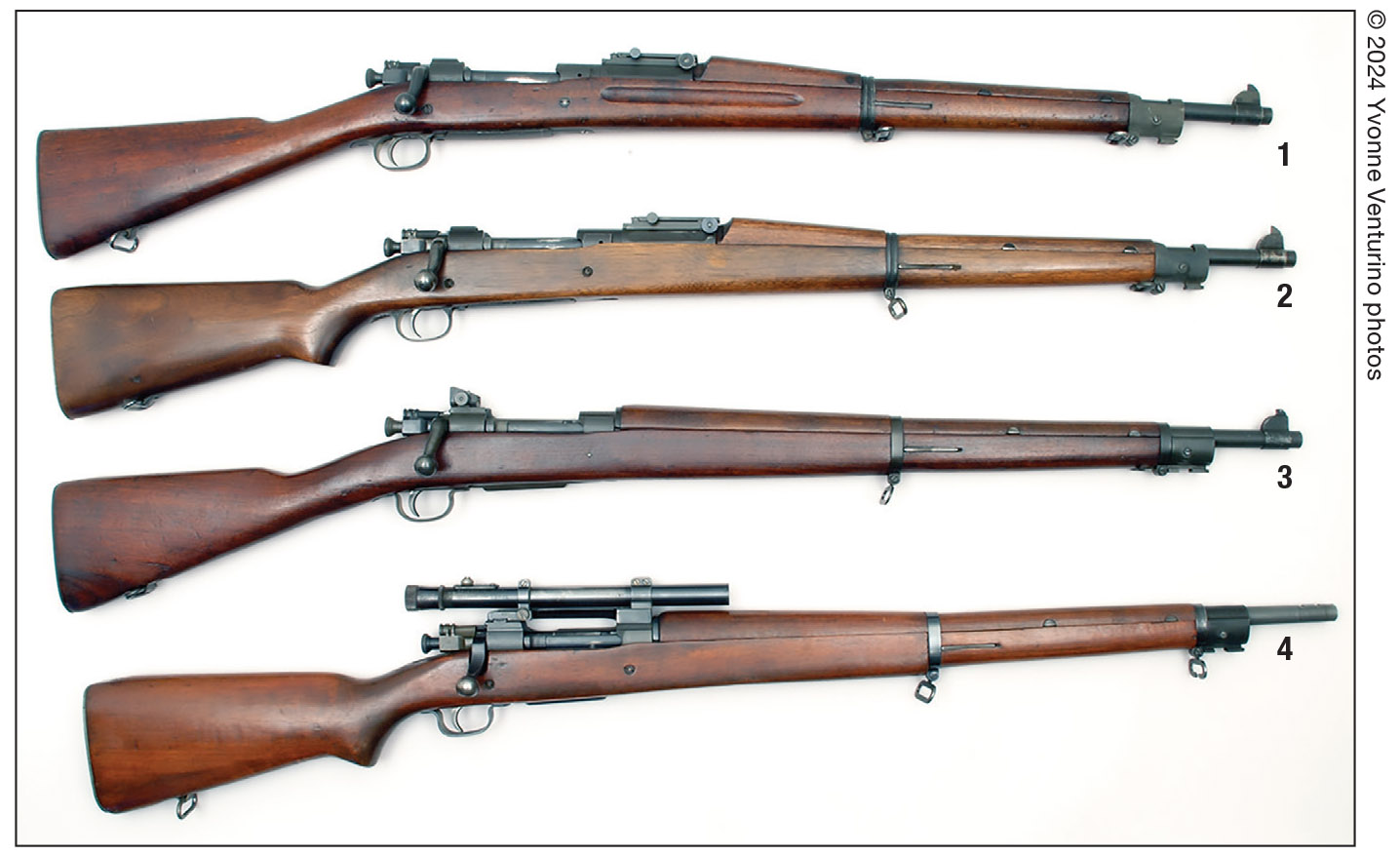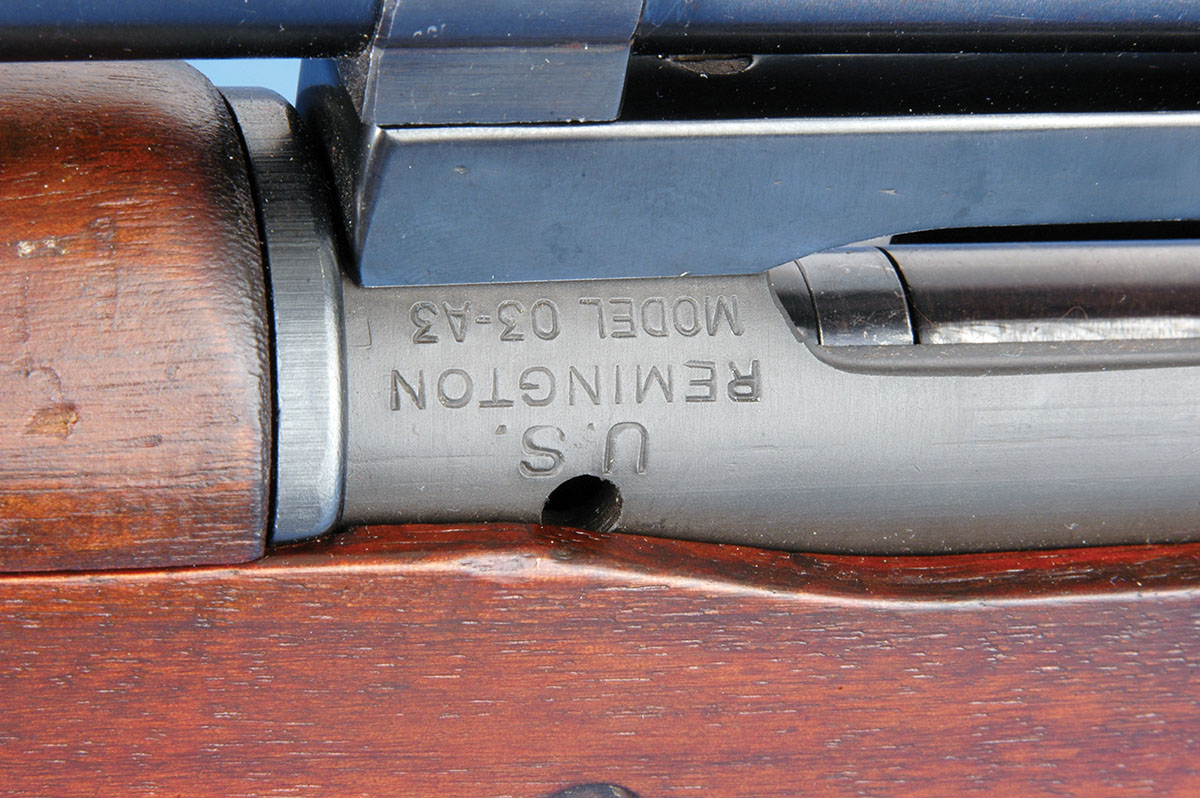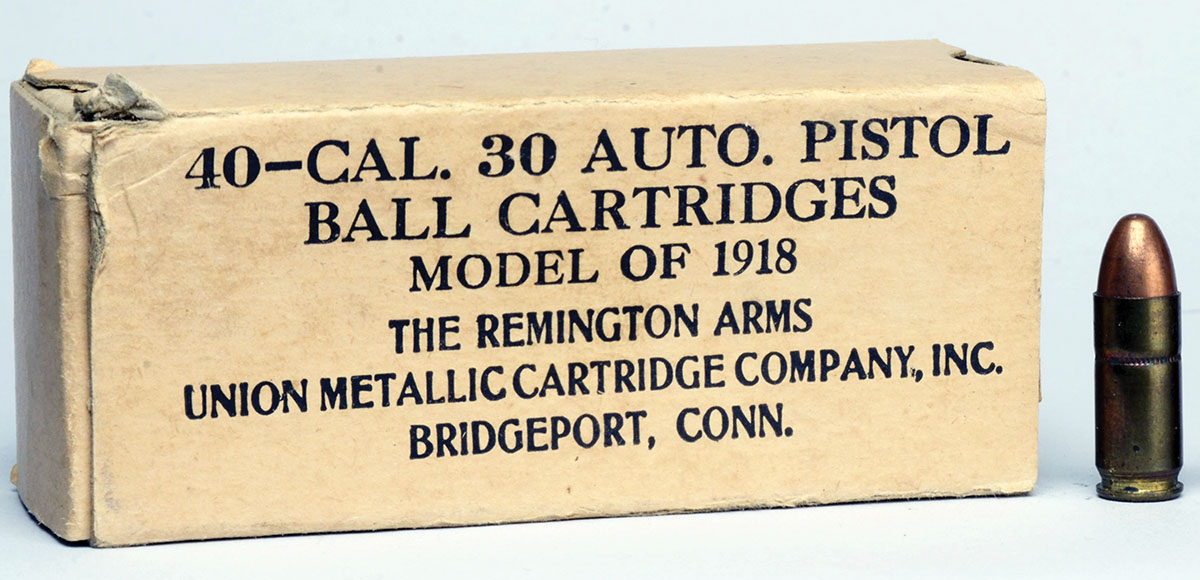Down Range
Model 1903 Genealogy
column By: Mike Venturino - Photos by Yvonne Venturino | March, 24

The M1903 was first chambered for a rimless, bottleneck .30-caliber case with 220-grain roundnose bullets. The velocity was about 2,300 feet per second (fps). Civilians came to know the cartridge as 30-03. In 1905, the Germans stunned the world’s military forces by introducing spitzer (pointed) bullets, so U.S. Ordnance officers followed by bringing out a new cartridge in 1906. It also used a rimless, bottleneck case that was .070 inch shorter than the 30-03 with a 150-grain spitzer bullet at 2,700 fps. It came to be loved by American hunters just as the 30-06. Most early M1903s were recalled, their barrels turned back and rechambered for the new round.

Metal finish in the beginning was bluing, but due to the war emergency of 1917, Parkerizing became standard. Virtually every metal part was beautifully machined from forged steel. Barrel lengths were 24 inches with a twist rate of 1:10 inches. The actions’ floorplate could be opened for unloading magazines. Model 1903 rear sights are finely adjustable for both windage and elevation. They were a ladder-type sight with an open notch when in the down position. When the ladder was raised, a tiny peep sight became available at the 300-yard mark. The ladder staff was marked in increments to an incredible 2,700 yards. Front sights were simple blades not protected by wings as were most other armies’ battle rifles. The front blades were available in different heights for zeroing. According to Lt. Col. William S. Brophy’s book, The Springfield 1903 Rifle, M1903s were zeroed at 547 yards (500 meters).

After World War I, formal target competition became important to the U.S. Army and especially the U.S. Marine Corps. Target shooters favored pistol-grip stocks to straight grip-style. Therefore, a pistol grip stock designated “C” became standard. Any Model 1903 with a pistol-grip stock automatically became a Model 1903A1 (alteration one) albeit all continued to be stamped Model 1903 on the front receiver ring. A further deviation from the basic Model 1903 became the A2 version. That was M1903 barreled actions attached to artillery pieces as a device for crew training and practice.
With American engagement in World War II almost certain, standard Model 1903s using straight grip stocks were put into production again in 1941. However, the manufacturer was Remington Arms Company. An unofficial variation became the Model 1903 Modified; a term mostly used by collectors. That was the standard M1903 with finger grooves omitted from stock forearms. Again, no matter the detail changes, these M1903s were stamped Model 1903.

By early 1943, the U.S. Army decided it needed a dedicated sniper rifle. Model 1903A3s were pulled at random from production lines. Rear and front iron sights were not installed. A rear scope mount was fitted on the peep sight’s pedestal with the front receiver ring drilled and tapped for the front scope base. The scopes were Weaver 330C 2.5x, which in the beginning were pulled from dealer’s shelves. These new sniper rifles were designated M1903A4, although none were so marked – all were still stamped “Model 03-A3.”
The front scope base would have covered the model and maker stamping, so it was shifted to be upside down on the left side of the receiver ring. Unintentionally with that move, the government made later counterfeiting of collector M1903A4s very difficult. Being placed directly over actions meant that M1903A4s had to be loaded with cartridges one at a time.
I’ve owned and extensively fired all the Springfield M1903s/03A3s mentioned herein except of course, the M1903A2 version. All were in good condition and have been accurate and reliable. Until my eyes aged to the point that iron sights became difficult, my favorites were M1903A3s because of its peep sights. Now, the M1903A4 gets the nod for an afternoon’s shooting.


